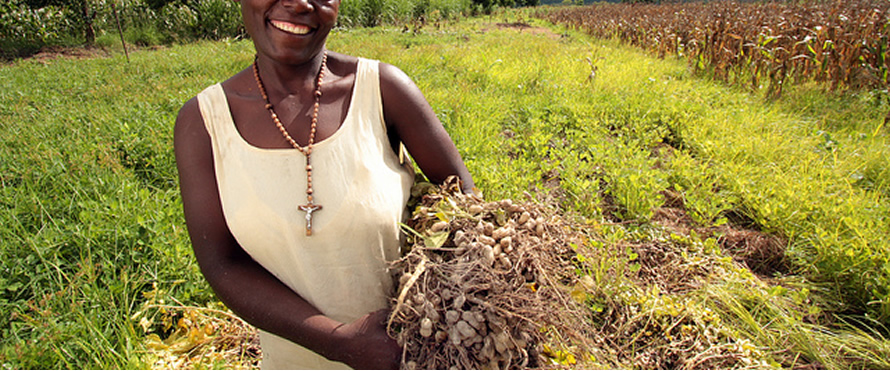
The Sunday News

 Business Reporters
Business Reporters
GROUNDNUT production across the country has gone down by about 40 percent since 2005 due to a number of challenges such as shortage of quality seed and poor agronomic practices.In an interview last week, Matabeleland North provincial agronomist Mr Davison Masendeke said groundnut production continued to plummet in spite of the grain being in high demand.
“Groundnut area has declined over years so as the yields. During our peak which was about in 2005 and 2006 we were in the region of 8 000 hectares countrywide but that has since dropped to 4 700ha,” said Mr Masendeke.
He said even the yields were also going down from the 2004 peak levels.
“The yields are also going down from a high of 0,67 tonnes per hectare in 2004 and 2005 to 0,23 tonnes per hectare in 2012 and 2013,” said the agronomist.
He said factors that were affecting groundnut production were the unavailability of quality and treated seed.
“There is unavailability of improved varieties and farmers are over recycling seed which is slightly very old.
“Seed available is found on the informal markets and that seed is poor and it affects the yield,” said Mr Masendeke.
He added farmers were not doing much to improve soil fertility.
“The other issue is low fertility where farmers are not putting much effort in terms of improving fertility on the ground. If they have fertiliser, they would rather put it into maize or other crops,” he said.
Mr Masendeke said poor agronomic practices were also affecting groundnut production in the country.
“There is generally poor agronomic practices. Currently there is climate change and farmers need to conserve moisture so that they improve yields,” said the official.
He said the poor yields were also compounded by high incidence of pests and disease that were affecting crops.
The agronomist said there was a need to train farmers on the latest groundnut production methods.
“If farmers are adequately trained they can satisfy local and external requirements. The groundnut seed system needs to be supported by high yielding varieties. If extension staff are trained in the agronomy of groundnuts, yield levels can be doubled,” said Mr Masendeke.
Mr Masendeke said markets and marketing systems needed to be improved if farmers were to reap the full benefits of their sweat.
He said groundnut production was critical as it played a role in soil fertility.
A research by a local non-governmental organisation eMKambo which specialises in some of the locally grown crops noted that most seed companies had shunned the production of groundnut seeds while problems facing the Grain Marketing Board played a bigger role in the reduction of groundnut production.
GMB was once the biggest buyer of groundnuts.
The research released this month titled “Has Groundnut lost its feathers in Zimbabwe?’ noted that while small-holder farmers in the country continued to plant groundnuts through recycling, groundnut lost its purity and seed qualities when inter-cropped indiscriminately.
The report also cited the high costs of production as a major drawback for farmers.
“The costs of production have also not worked in favour of local farmers resulting in commercial processors resorting to importing groundnuts from Malawi which land in Zimbabwe at $700 to $800/tonne. Given high cost of inputs, local farmers will find it viable when they sell at $1000/tonne.”
The organisation said extension workers were not properly educating farmers on the production of the crop.
“Many farmers do not know much about Gypsum while on the other hand, fertiliser suppliers promote use of Compounds D and C in groundnuts, even in dry areas where fertilisers rarely dissolve in the soil due to lack of rainfall or water.
“This is worsened by lack of extension support on groundnuts as a cash crop. Farmers lack sufficient knowledge on expected yield by variety, types of varieties, market demand and scientific names of varieties.”
eMKambo, in the report, added that farmers had also been confused by the changing rain patterns as traditionally groundnuts were planted in mid-October but the country was now receiving rains in mid-November.
This had resulted in most fresh groundnuts being supplied from irrigation schemes, most which are also facing viability problems.
“Perhaps irrigation schemes can play a big role in groundnut production particularly those with reliable supply of water.”



